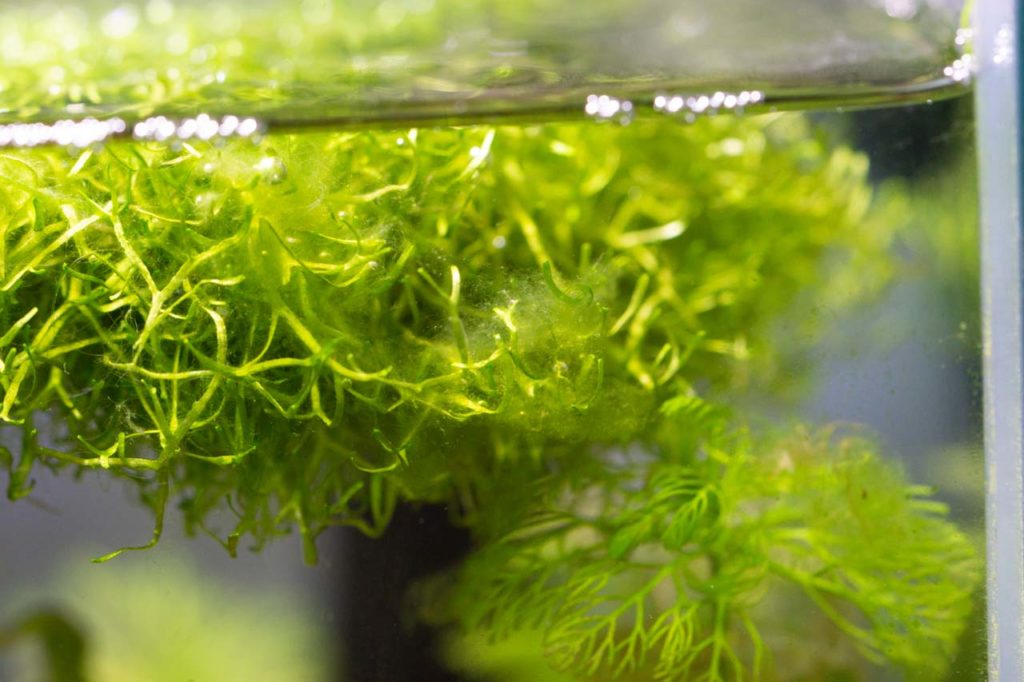How do I fight them bacterial bloom? Above all newly established aquariums can always come back under one bacterial bloom or one bacterial lawn Suffer. This is usually done with the Algae bloom reconciled, which is not always correct. Here you have to differentiate. But what is an algal bloom and what is a bacterial bloom and bacterial lawn? And above all, what can I do about it if I have these bacteria in the aquarium? We will now get to the bottom of these questions.

How do I recognize a bacterial bloom / bacterial lawn?
If the water becomes milky and rather white, then it seems that you have a bacterial bloom. This is particularly the case in newly set up aquariums. There the ratio between bacteria is not yet right and the water is enriched with suspended matter and discolouration. In the water, however, one does not see any floating parts, but here it is a question of free-floating bacteria, which in large numbers discolour the water accordingly. The water also becomes discolored when there is an algal bloom. There, however, mostly rather greenish. Green algae are floating algae and easily mistaken for a bacterial bloom.
Then what is a bacterial lawn? This usually occurs with new objects in the aquarium. Roots are very badly affected. Especially the new interfaces. Algae blooms can also occur on other objects. White deposits which usually look like mold then collect there. Very often it is also compared to mold.
What can be the causes of a bacterial bloom?
Especially in the first few weeks of the aquarium, it is important to remain calm, because the bacterial bloom usually disappears on its own. You definitely don't have to panic.[the_ad id="1019″]
Anyone who thinks that this might be bad for the fish should be told that this is not a problem either. Fish don't mind a bacterial lawn and flowering. There are even fish that attack the bacterial lawn and like to eat it.
But if you have a bacterial bloom, it is usually very unsightly because the water becomes very cloudy. Usually so strong that you can no longer see anything. It is advisable to identify the causes first. These can be, for example, excessive fertilization or incorrect filtering. In addition, a bacterial bloom can also occur as a result of incorrect feeding. Anyone who works with starter bacteria can also suffer from a bacterial bloom if the bacteria suddenly take over. All of these can be causes of a bacterial bloom.
Basically, the flower always appears when the microbiological balance in the aquarium is not right. Then an algal bloom can occur.
If a bacterial bloom occurs in an already established aquarium, something seems to have changed drastically. Older aquariums should actually no longer get bacterial blooms. If so, you should first check the water parameters to determine what may have changed. Very often we have found that it is because the temperature has risen sharply. This can happen especially in the summer months. Let's summarize the most important causes:
- Microbiological balance not yet present
- Too much fed
- Too much fertilizer
- Start-up phase of an aquarium
- temperature rise in summer
What can I do about it if I see the bacterial bloom?
Once the causes have been found, it is time to fight the bacterial bloom. First of all you have to make sure that the causes such as too much food or wrong lighting conditions are eliminated, only then does it make sense to take further measures.
Probably the best and most successful measure is the use of a UV clarifier. This uses its UV light to remove the dissolved bacteria. Bacteria and microorganisms are destroyed by the UV light. This light is usually built into the filtering circuit. More information can be found in our guide to UV light. There are also a few things to consider here and we advise you to only use this UV clarifier or UVC clarifier for as long as necessary. Mist, the water becomes crystal clear again after a few days. In the case of an aquarium in the start-up phase, however, you should first wait and see, because you not only destroy unwanted bacteria with it, but also necessary bacteria.[the_ad id=”1019″]
In addition, it is also necessary to control the fertilization, which goes hand in hand with the control of the water values. Too much fertilizer is usually used and the nutrient balance is no longer correct.
You should also do a water change when there is a bacterial bloom. This should be quite large, so that you can already remove a large proportion of the dissolved bacteria in the water. Let's summarize the most important measures:
- eliminating the causes
- Control of the water values
- Correct fertilization
- perform a water change
- Use of a UV C clarifier
And how do you deal with the bacterial bloom?




